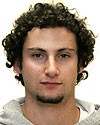PHILADELPHIA – At Illinois. At Villanova. Enough already.
If Lute Olson wanted to schedule two more road games against top five opponents, he would have added to Arizona’s already No. 1-ranked nonconference schedule in the country. Whatever happened to the NCAA tournament being played in neutral locations where the best team wins, not the best home team? The regular season should determine only your participation in the tournament, not your final standing on the college basketball landscape. This is not the BCS – this is supposed to be better.
Earlier in the year, Olson said that he thought the point differential from a home to a road game changes by “”12 or 13″” points. That means Arizona would have clobbered Villanova at McKale by eight or nine points and never would have looked back. Have you ever looked at the lines on the same game, home versus away? Arizona was -14.5 against Oregon State at home, and -6 on the road. If Las Vegas understands the difference, so should the committee.
“”So what?”” you say. The Wildcats have done fine on the road this year, playing arguably their best game against Washington and winning in hostile arenas like Stanford.
How about their worst loss of the season, though – a 17-point disaster at North Carolina when they had to travel across the country – or road losses to cupcakes like Oregon and Oregon State. Remember, Arizona lost just twice at home and two times in neutral settings.
The Wildcats had to travel more miles than any other school in the NCAA tournament just so they could deal with the freezing cold weather and winds of Philadelphia, sleep in hotel beds probably much too small and wake up in a time zone with a two-hour difference. Meanwhile, the Villanova players got out of bed and walked across the street to a venue that has their logo underneath the floorboards, as I found out late Sunday night after both teams had cleared the building. Villanova played three home games at the Wachovia Center, and if it wasn’t against NCAA regulations, it would have played a lot more, considering its on-campus gym seats just 6,500.
Compare the other No. 8 seeds: Arkansas played in Dallas, a short drive away, George Washington played in Greensboro, at least on the same coast, and Kentucky played in Philadelphia, staying away from further regions like San Diego or Salt Lake City.
Olson has never used the volume of the opposing crowd as an excuse. As long as it’s loud, it doesn’t matter, Olson has proclaimed numerous times. But in Philadelphia, a city that booed Santa Claus and Michael Irvin when he was hurt, the fans don’t cheer for their team; they boo the other team.
“”This town is catered to pro teams,”” said junior point guard Mustafa Shakur, a Philadelphia native.
Associate head coach Jim Rosborough said it wasn’t as bad as Illinois last year, but that’s like saying New York traffic isn’t as bad Los Angeles traffic.
“”It was like a home game for us today,”” Villanova senior guard Randy Foye said.
Olson’s players of course downplayed the road court disadvantage as well.
“”We could sense here in Philly that everyone in Philly expected us to advance out of this,”” Villanova head coach Jay Wright said. “”We had the home court. We had the No. 1 seed. It was just a foregone conclusion we’re going to Minneapolis.””
Said Marcus Williams: “”We’re used to playing away games. Out of the 20,000 people that showed up, at least 17,000 were probably Villanova fans. It gave me a little motivation to go out there and get the job done. It was loud and crazy, but I thought we dealt with it well.””
You may believe Williams or not, but like the late game turnovers against Illinois, which snowballed Arizona to death last season, Arizona’s early turnovers were at least somewhat a product of the crowd. And the pushoffs, especially Kyle Lowry on almost every drive into the lane, had Williams perturbed to say the least. The nongoaltending or foul call on Daniel Dillon’s layup in the second half may have been just a missed call, but with 20,000 fans yelling at the officials the entire game, it was a lot easier for them to miss the call in Philadelphia.
Want more proof that home-court advantage in the NCAA tournament means more than just mom’s home cooking?
When Michigan State won the tournament in 2000, the regionals were held in Auburn Hills. In 2003, Syracuse, a No. 3 seed, played in Albany, N.Y., and guess how they finished. National champions. That same year, Texas played in San Antonio, and it reached the Final Four. North Carolina in Greensboro in 1998 reached the Final Four as well.
Not only is the NCAA asking David to fight Goliath, but it’s asking David to fight Goliath with 20,000 people screaming “”Let’s go Goliath, Let’s go!””
The Wildcats may not be in the David role that often, but when they are, let’s hope they don’t have to play in Goliath stadium anymore.
“”We could sense here in Philly that everyone in Philly expected us to advance out of this,”” Villanova head coach Jay Wright said. “”We had the home court. We had the No. 1 seed. It was just a foregone conclusion we’re going to Minneapolis.
“”I tried to talk about it all the time. … I was really concerned about it.””
Hey Jay, if you’re so concerned, tell the NCAA to play the game on a neutral court. Then we’ll see who wins.









